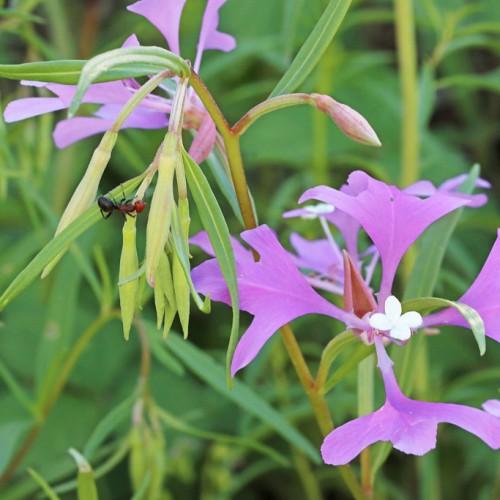
Pink Fairies
Clarkia pulchella
Watering:
Frequent
Hardiness Zone:
Flowers:
Flowers
Sun:
full sun,part shade
Fruits:
Fruits Ready In
Leaf:
Yes
Growth Rate:
Low
Drought Tolerant:
Yes
Salt Tolerant:
Yes
Thorny:
Yes
Care Level:
Moderate
watering
Lindley Clarkie (Clarkia amoena subsp. lindleyi) prefers well-draining soil and bright, indirect sunlight. Water the plant deeply and infrequently, allowing the soil to dry out between watering. Water your Lindley Clarkie approximately once a week or more often if your climate is hot and sunny. Water the soil until the water begins to come out of the drainage holes at the bottom of the pot, then empty the drainage tray beneath the pot. Avoid overwatering or the roots may rot. To ensure the plant is getting the right amount of water, test the soil in between watering with your fingers. If the top inch of soil feels dry, it's time to water again.
sunlight
Lindley Clarkie (Clarkia amoena subsp. lindleyi) does best in bright, indirect sunlight and can tolerate some direct sunlight each day. It should receive a few hours of direct sun each day, with 4 to 6 hours being ideal. Furthermore, because it is a short-lived annual it thrives best when in full sun. Sunlight should be provided for this species in the warmer months or, if grown indoors, in the brighter days of spring and summer. It is best to avoid providing direct sunlight in the middle of the day when temperatures are at their highest, as this could cause the leaves to scorch or become damaged.
pruning
Lindley Clarkie (Clarkia amoena subsp. lindleyi) is a deciduous species that responds especially well to pruning. The best time for pruning is during the late summer or fall, when the plant has gone dormant. This will give the plant time to regrow and set new buds in time for the next blooming season. Pruning is important to maintain the plant’s shape and reduce the overall size. The amount of pruning required will depend on the desired effect. For a bushier, fuller look, it is recommended to prune 1 third of each of the final flowering stems back to the main stem during the late summer or fall. This will encourage new growth and will help to produce a more vibrant display of blooms the following year. For rejuvenation pruning, the entire plant should be pruned back in late winter or early spring. This will help to reduce the size and encourage more new growth.
